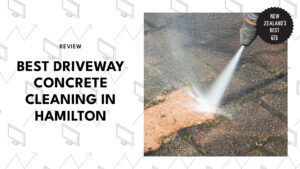How to Apply for a Vehicle Dealer License in New Zealand
- How to apply for a vehicle dealer license in New Zealand?
- STEP 1: Check your eligibility to register as a motor vehicle trader.
- STEP 2: Choose the right registration option.
- STEP 3: Gather the necessary details before filling out the application form.
- STEP 4: Complete your application online.
- How to apply online to become a registered motor vehicle trader as a company in New Zealand?
- How to apply online to become a registered motor vehicle trader as an individual in New Zealand?
- STEP 5: Submit your application.
- STEP 6: Complete the statutory declaration form.
Are you considering entering the vehicle dealing business in New Zealand? If so, you’re in the right place. This guide is designed to offer you a clear and straightforward path to achieving your goal.
How to apply for a vehicle dealer license in New Zealand?
In New Zealand, a vehicle dealer license is called a motor vehicle trader registration. So, if you want to sell motor vehicles through your business, regardless of whether you are a sole trader, partnership, or limited liability company, all you need to do is register as a motor vehicle trader.
To register as a motor vehicle trader, you need to complete and submit a registration application online through the New Zealand Motor Vehicle Traders Register.
Check out the step-by-step process on how to do so below.
| Difficulty | Moderate ●●●○○○ |
| Number of steps | 6 |
| Time to perform steps | Approximately 1-2 weeks (depending on response times and availability of required documents) |
| Things you need | Access to a computer with internet connectivity Relevant personal and company information (as detailed in the steps) Valid identification documents (e.g., passport, driver’s license) Company registration details (for company registration) Access to a printer and scanner (for signing and sending the statutory declaration form) |
STEP 1: Check your eligibility to register as a motor vehicle trader.
First and foremost, let’s address who cannot register as motor vehicle traders in New Zealand. It’s important to note that certain individuals and companies are ineligible. Here are some of the key points to be aware of:
For Individuals, you cannot register if you:
- Are a banned person.
- Are under 18 years of age.
- Are currently bankrupt.
- Have been convicted of a dishonesty offense or specific offenses under the Fair Trading Act within the past five years.
- Are prohibited from acting as a company director.
- Had your motor vehicle trader registration cancelled within the last five years.
For companies, your company cannot register if:
- It includes banned persons.
- It is in liquidation.
- It has been removed from the Companies Register.
- It has disqualified individuals (including banned persons) involved in management roles like directors, Chief Executives, or equivalents.
- Had its motor vehicle trader registration cancelled within the last five years.
Entities such as trusts and incorporated societies are also not eligible to register as motor vehicle traders.
If you don’t fall into any of the disqualification categories mentioned above, then you’re all set to proceed with the registration process.
STEP 2: Choose the right registration option.
In this step, you’ll need to determine which registration option applies to you. The process to register as a motor vehicle trader in New Zealand applies to both individuals and companies engaged in selling vehicles like cars, trucks, vans, and motorcycles.
Let’s break down the differences:
- Registering as a Company: If your motor vehicle trading business is already a registered company on the New Zealand Companies Register, then your registration path involves signing up as a company.
- Registering as an Individual: This option is for you if you are an individual or a sole trader. Choose this option if you:
- Are involved in the business of motor vehicle trading, OR
- Declare, advertise, notify, or represent yourself as a motor vehicle trader.
Note: This option is exclusively for individuals and sole traders. If your business is registered on the Companies Register, you should opt for company registration.
STEP 3: Gather the necessary details before filling out the application form.
At this point, you’ll want to gather all the necessary details before you start filling out the application form. Think of it as getting everything set up for a smooth process.
It’s worth noting that the information they’re looking for on the application form varies depending on whether you’re registering as a company or an individual motor vehicle trader.
Here’s a quick rundown of the information you’ll need:
1. For company registration, you’ll need to provide:
- Company Name and Number: This is the name of your registered company and its associated company number.
- Registered Office Address: This is the official address of your company’s main location.
- Address for Service: Provide a physical address where official documents can be sent, which needs to be an actual address and not a PO Box or rural delivery.
- Contact Information: Include contact details such as an email address and phone numbers.
Additionally, the Motor Vehicle Traders Register will request specific information about the individuals who manage the business.
This includes all directors listed on the company register, as well as the person(s) holding the role of Chief Executive or an equivalent position. For each of these individuals, you’ll need to provide:
- Full Legal Name: The complete legal name as it appears on their birth certificate or passport, including any middle names.
- Date of Birth: The birthdate of the person.
- Residential Address: The address where the person lives.
- Driver License and Passport Numbers: If the person holds a driver’s license or passport, provide these identification numbers.
Make sure that the information you provide on the application matches exactly with the information listed on the Companies Register. If there are any discrepancies, your application might face processing issues.
2. For individual registration, you’ll need to provide:
- Your Full Legal Name: This should match the name on your birth certificate or passport, including any middle names and aliases (any other names you’re known by).
- Date of Birth:
- Residential Address: Where you currently live.
- Address for Service: A physical address where official documents can be sent, excluding P.O. Boxes or rural addresses.
- All Trading Names: List all the names your business goes by.
- Contact Information: Include your email address and phone numbers.
- Driver License and Passport Numbers: If you have a driver’s license or a passport, provide those identification numbers.
Once you’re confident that you have this information at hand, whether you’re registering as a company or an individual motor vehicle trader, you’re all set to complete the application form.
STEP 4: Complete your application online.
If you’ve reached this stage, it’s time to complete your application form. The Motor Vehicle Traders Register only accepts applications through their website, and we’ll guide you through how to do it below.
How to apply online to become a registered motor vehicle trader as a company in New Zealand?
To apply to become a registered motor vehicle trader as a company in New Zealand, you need to submit an application through the Motor Vehicle Traders Register’s online service menu, specifically under the ‘Apply to register as a company‘ section.
Here’s a detailed breakdown of the process:
- Start by clicking Motor Vehicle Traders Register. This will redirect you to the Register’s platform.
- Once there, navigate to the Online Services menu and select “Apply to register as a company.” This action will lead you to the ‘Application as a company’ screen.
- Carefully fill out all the required fields on this screen. After doing so, hit Continue. This will take you to the ‘Application created’ screen.
- Take a moment to review the information you’ve provided. If everything looks accurate, click OK. This will bring you to the next page, where you’ll find an overview of all the screens you’ll need to complete before your application can be submitted.
- Progress through each of these screens, entering the necessary information as prompted.
- For any directors or CEOs associated with your company, provide their full legal names exactly as they appear on their passport or birth certificate. Make sure to include any middle names.
Additionally, provide their current residential address and any other names they are known by (Aliases).
- Once you’ve successfully filled out all the screens, locate the Submit button. Clicking this will prompt the ‘Pay now‘ screen to appear.
- On the ‘Pay now‘ screen, you’ll need to input your details, including your email address. This is crucial,l as it ensures you receive a Tax Invoice/Receipt. After you’ve done this, select Continue to proceed to the ‘Payment Checkout‘ screen.
- On the ‘Payment Checkout‘ screen, input your credit card information and finalise the process by clicking Submit. If your payment goes through successfully, you’ll see a green tick confirming approval.
How to apply online to become a registered motor vehicle trader as an individual in New Zealand?
To apply to become a registered motor vehicle trader as an individual in New Zealand, you need to submit an application through the Motor Vehicle Traders Register’s online service menu, specifically under the ‘Apply to register as an individual‘ section.
Here’s a comprehensive guide to help you navigate the process:
- Begin by clicking Motor Vehicle Traders Register. This will take you to the Register’s designated platform.
- On the Register’s platform, locate the Online services menu. From here, choose “Apply to register as an individual.” This action will lead you to the ‘Application as an individual’ screen.
- Fill out all the required fields on this screen accurately and completely. Once you’re done, click Continue. This will transition you to the ‘Application created’ screen.
- Take a moment to review the details you’ve entered. If everything looks correct, press OK. This will direct you to the subsequent page, where you’ll find an outline of all the screens you must complete before you can submit your application.
- Work through each of these screens, providing the necessary information as prompted. Don’t forget to include any Aliases.
- After successfully filling out all the screens, provide your email address in the appropriate field on the page. This is crucial, as it ensures you receive a Tax Invoice/Receipt.
Once you’ve done this, select Submit to proceed to the ‘Pay now‘ screen.
- On the ‘Pay now‘ screen, input your credit card information to finalise the payment process. Clicking Submit will complete the transaction. If your payment is approved, you’ll see a green tick confirming the successful transaction.
At this point in the process, you’ve successfully completed the application form and made the required payment, bringing you closer to the final stages of registering as a motor vehicle trader in New Zealand.
Note: It’s crucial to ensure that any applications submitted for registration or renewal are filled out by the correct individual.
If your business is registered as a company, any applications for registration or renewal must be fully completed by someone involved in the company’s management (Director, CEO).
If you’re applying to register as an Individual/Sole trader, it’s essential to fully complete any registration or renewal application on your own and use a unique email address exclusively for you.
Applications not appropriately filled out by the designated person may be declined by the Registrar.
STEP 5: Submit your application.
Following your payment confirmation, you’ll have the option to move forward. Simply click “Next” and then “Continue.” These selections will guide you to the ‘Submission confirmation‘ screen. Note that this step applies to both company and individual motor vehicle traders.
Take a moment to review all the details presented on this page. If everything appears accurate and you’re confident in the information you’ve provided, go ahead and select “OK.” This action confirms your decision to submit the application for registration.
Upon completing this step, you can expect to receive a confirmation email from the Motor Vehicle Traders Register.
Inside this email, you’ll find two important pieces of information: your unique motor vehicle trader number (MVT File Number) and your motor vehicle trader key (MVT Key).
Treat these credentials as highly confidential and keep them secure because these details will be your future access key when logging into the Register.
STEP 6: Complete the statutory declaration form.
Once your application and payment have been received and verified, you will also expect to receive an email containing a statutory declaration form. This form is a formal statement affirming your eligibility and lack of disqualification to become a registered motor vehicle trader.
As you proceed to fill out the statutory declaration form, make sure that your full legal name is clearly provided. It’s important to adhere to the following instructions:
- Sign the form in the presence of an authorised witness. This authorised witness can be a solicitor, Justice of the Peace, or another individual recognised under the Oaths and Declarations Act 1957 for taking statutory declarations.
- After signing, scan the completed form and send it to the Motor Vehicle Traders Register at [email protected] as a PDF attachment.
Now, when the Motor Vehicle Traders Register receives your signed and witnessed statutory declaration, their team will conduct a thorough review. This review ensures that the information provided is accurate and complete.
If everything meets the criteria, the Register will proceed with approving your application. Following approval, you can expect an email containing your certificate of registration, giving you the title of registered motor vehicle trader.



